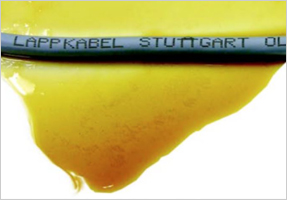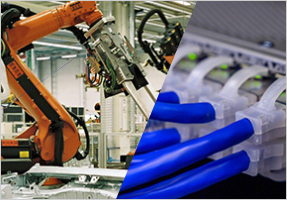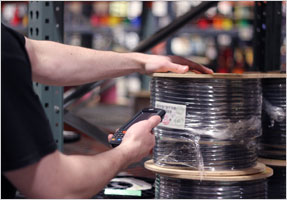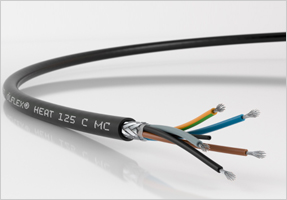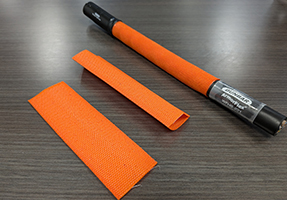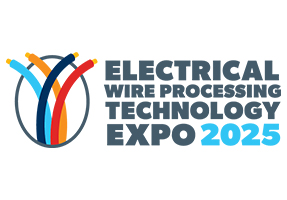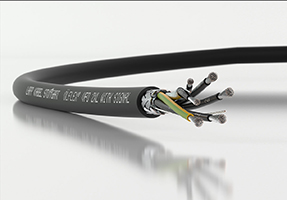How IoT Revolutionizes the Wire and Cable Industry
- Kassie Teagarden
- Industry Trends
- Jul 28, 2023
- 5210views

How IoT Revolutionizes the Wire and Cable Industry
Written By: Kassie Teagarden, Senior Content Marketing Specialist, LAPP Tannehill
Learn how the Internet of Things (IoT) has revolutionized the wire and cable industry and what products you need for a smart cable infrastructure.
This article was republished in the November/December 2024 issue of The Electrical Line, an electrical trade publication with over 19k subscribers: https://digitalelectricalline.mydigitalpublication.com/november-december-2024/page-36
The world we live in is rapidly evolving, with technology at the forefront of this transformation. One of the most impactful innovations in recent years is the Internet of Things (IoT).
IoT has reshaped industries across the globe, and the wire and cable industry is no exception. As we move towards a more connected world, IoT is revolutionizing how wire and cable products are manufactured, deployed, and maintained.
Let's explore the significant role IoT plays in transforming the wire and cable industry and the benefits it brings to manufacturers, businesses, and consumers alike.
IoT and Industrial Automation
Cables play a crucial role in enabling seamless communication between IoT devices and facilitating industrial automation. Smart manufacturing processes, powered by IoT-enabled devices and sensors, have improved production efficiency and quality.
IoT-connected machines can monitor various parameters, such as temperature, pressure, and vibration, ensuring optimal production conditions and reducing downtime. Manufacturers can now proactively address maintenance needs, leading to increased productivity and reduced operational costs.
Safety is a paramount concern in industrial settings. Faulty or inadequate cables can lead to hazardous situations and jeopardize worker safety. High-quality cables designed to meet industry standards and certifications ensure compliance with safety regulations.
Additionally, cables equipped with fire-resistant properties enhance safety measures, providing extra protection in case of emergencies. Check out these fire and security cables for your IoT project.
Industrial automation systems are often dynamic, with components being reconfigured or relocated based on changing production demands. Cables with high flexibility and bending resistance accommodate these dynamic setups without compromising data transmission quality.
Read about the different types of flexible cables you can choose from.
Enhancing Supply Chain Management
The wire and cable industry relies heavily on a complex supply chain. IoT technologies have streamlined supply chain management by providing real-time data on inventory levels, transportation conditions, and delivery status.
Smart tracking solutions enable companies to optimize logistics, reduce delays, and ensure products reach their destinations on time. Additionally, IoT-driven predictive analytics empowers businesses to anticipate demand fluctuations, enabling better inventory planning and management.
Explore customer managed inventory (CMI) and vendor managed inventory (VMI) inventory management solutions.
Quality Control and Process Improvement
Maintaining quality standards is crucial in the wire and cable industry, where product failures can have severe consequences. IoT solutions have enabled real-time quality monitoring during production, allowing manufacturers to identify defects promptly and implement corrective measures.
With IoT-enabled traceability, companies can track raw materials and components throughout the manufacturing process, ensuring compliance with industry regulations and assuring customers of product authenticity.
Cables used in an IoT project facilitate a feedback loop for process improvement. Analyzing data collected from various stages of production can help identify bottlenecks, inefficiencies, and potential areas for improvement.
Implementing these improvements based on data-driven insights can lead to enhanced product quality and more efficient manufacturing processes.
Smart Cable Infrastructure
The proliferation of IoT devices requires a robust cable infrastructure to transmit data seamlessly. IoT has given rise to the development of smart cables that can handle higher data rates, reduce signal interference, and adapt to changing environmental conditions.
These cables are essential for industries like telecommunications, data centers, and power distribution, where data transfer reliability and speed are critical.
So, what cables are best to use for a robust IoT infrastructure?
Ethernet Cables
Ethernet cables, particularly Category 6 (Cat 6) and Category 6a (Cat 6a) cables, are widely used for IoT applications. They offer high-speed data transmission, low signal interference, and backward compatibility with older Ethernet standards. These cables are suitable for connecting IoT devices to local networks, routers, and switches, providing a stable and reliable communication link.
Industrial Ethernet Cables
In industrial IoT settings, where environmental conditions are more challenging, industrial Ethernet cables like Cat 6A F/UTP (Foiled/Unshielded Twisted Pair) or Cat 7 S/FTP (Shielded/Foiled Twisted Pair) are preferred. These cables offer enhanced durability, better resistance to EMI/RFI interference, and protection against mechanical stress and harsh environments.
Fiber Optic Cables
Fiber optic cables are ideal for long-distance data transmission and applications where immunity to electromagnetic interference is critical. They offer high bandwidth, low signal loss, and excellent data security. Fiber optic cables are especially suitable for connecting remote IoT devices or interconnecting multiple IoT networks across vast distances.
Power and Data Combination Cables
For certain IoT applications, combining power and data transmission into a single cable simplifies installation and reduces cable clutter. Hybrid cables that can carry both power and data are useful in scenarios where IoT devices require both connectivity and power supply, such as in remote sensor installations or IoT-enabled surveillance systems.
Multi-Conductor Cables
Multi-conductor cables are suitable for connecting multiple sensors or devices to a central control system. These cables have multiple insulated conductors within a single cable jacket, making them efficient for organizing and managing connections in an IoT network.
Shielded Cables
To ensure reliable data transmission in industrial settings with high electromagnetic interference, shielded cables are essential. Shielded twisted pair cables (STP) or foiled twisted pair cables (FTP) offer protection against EMI/RFI, reducing signal degradation and enhancing the overall reliability of the IoT infrastructure. Choose the right type of cable shielding for your IoT project.
IoT and Predictive Maintenance
In the wire and cable industry, maintenance is a significant aspect to ensure safe and efficient operations. IoT-driven predictive maintenance has revolutionized how businesses approach maintenance tasks.
Cables and equipment equipped with sensors can also monitor their own condition and detect any signs of wear and tear, temperature, and stress levels. By analyzing this data, companies can predict potential failures and schedule maintenance proactively, avoiding costly downtime and enhancing overall safety.
Energy Efficiency and Sustainability
IoT technologies contribute to energy efficiency and sustainability in the wire and cable industry. Smart sensors and controls can optimize energy consumption during the manufacturing process, reducing waste and lowering the industry's carbon footprint.
Moreover, IoT-driven energy monitoring in infrastructure applications helps identify areas for energy conservation, leading to a more sustainable future. Check out LAPP’s sustainability efforts.
A more connected future with the right cables in IoT
The incorporation of IoT into the wire and cable industry marks a significant turning point, as it revolutionizes manufacturing processes, supply chain management, quality control, and infrastructure development.
The implementation of IoT-driven solutions enhances productivity, reduces operational costs, and facilitates sustainability.
As the world moves towards a more connected future, the wire and cable industry's continued adoption of IoT will play a pivotal role in shaping a smarter and more efficient world for generations to come.
Embracing this technological evolution is essential for businesses seeking to remain competitive and relevant in this rapidly changing landscape.

